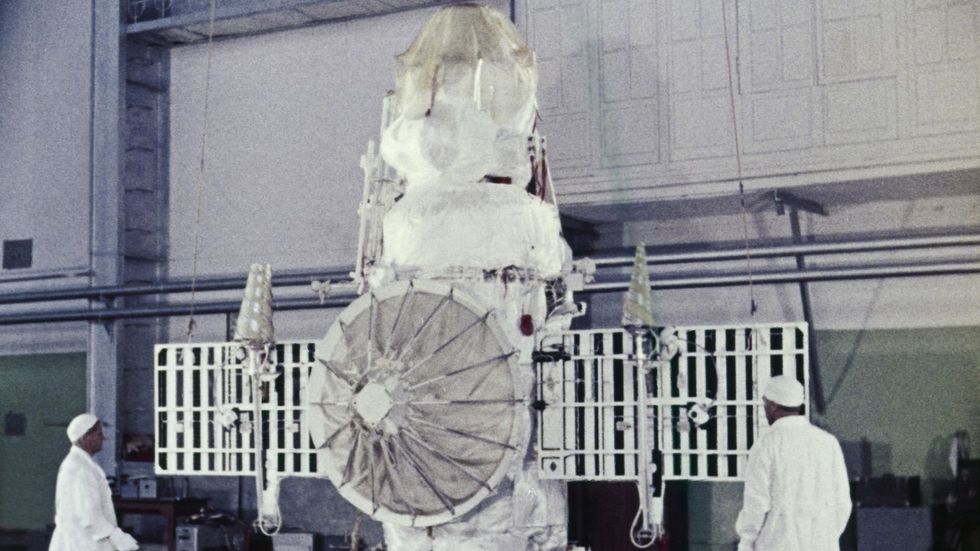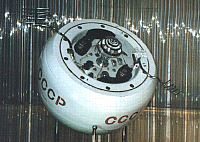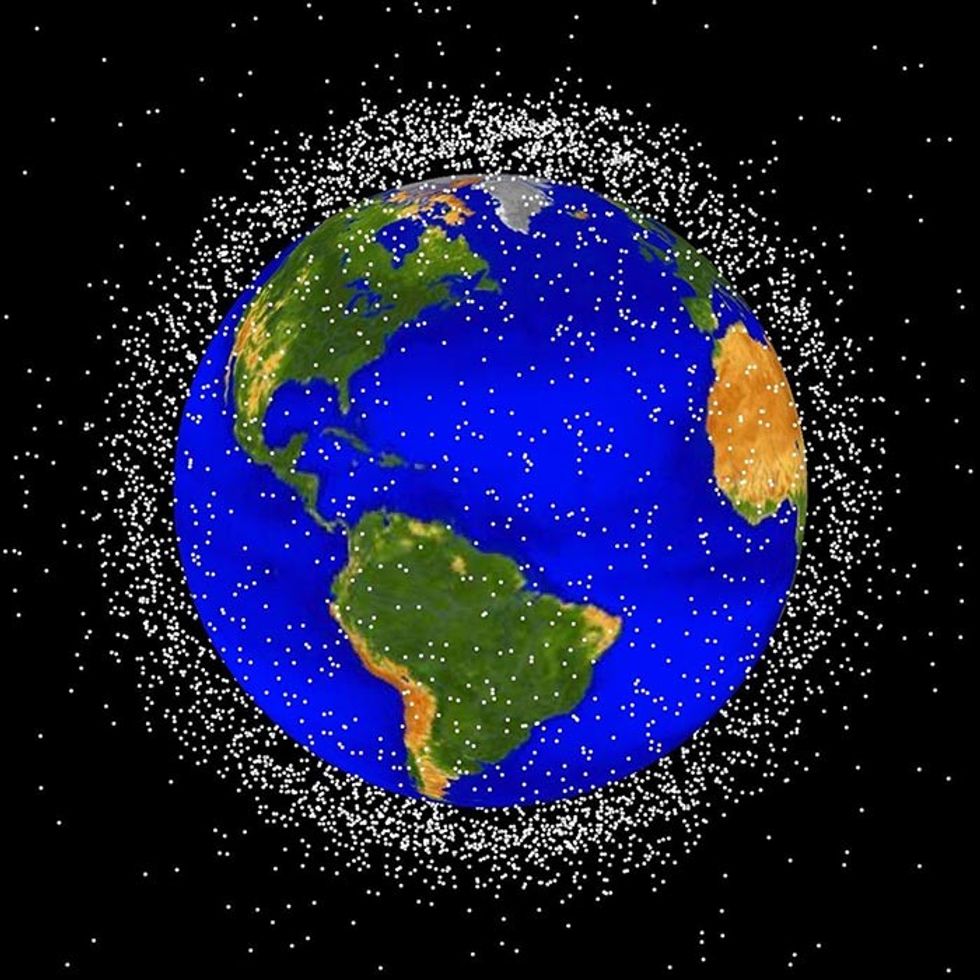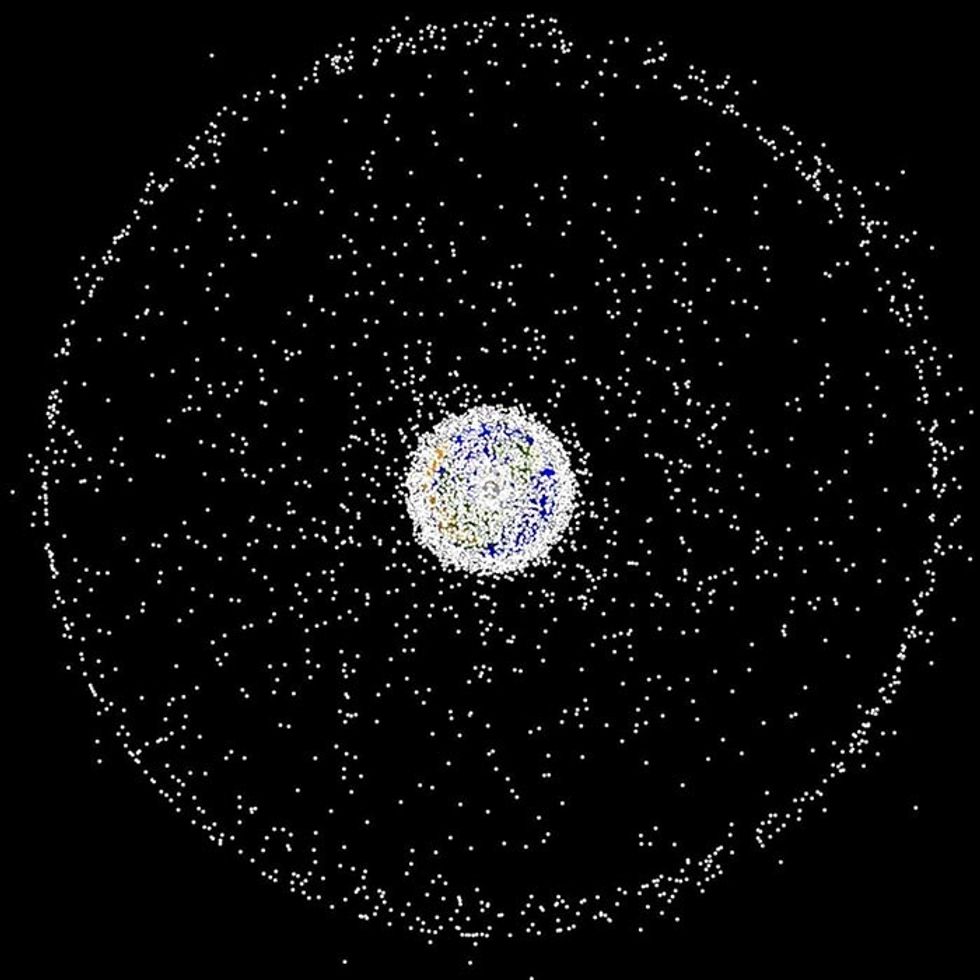Out-of-control Soviet satellite to crash land on Earth in DAYS as scientist warns it could 'hit like a meteorite'

The failed Venus lander will likely survive re-entry into Earth's orbit due to its specially designed heat shield
Don't Miss
Most Read
A half-tonne Soviet spacecraft is set to crash back to Earth next week, with experts predicting it could hit "like a meteorite" at around 150mph.
The Kosmos 482 probe, launched by the USSR in 1972 as part of a mission to Venus, has been circling our planet for 53 years.
Space tracker Dr Marco Langbroek has calculated that the defunct satellite will begin its descent around May 10, give or take a few days.
Much to the alarm of people on Earth, the spacecraft is likely to survive re-entry intact due to its heat shield, which was specially designed to weather Venus's harsh atmosphere.

Kosmos 482 being prepared by scientists
|Sovfoto/Universal Images Group/Getty
Kosmos 482 was built as a sister probe to Venera 8, which successfully landed on Venus in 1972 and transmitted data for over 50 minutes before succumbing to the planet's extreme heat.
The Soviet Union had achieved several space firsts, including launching the first satellite Sputnik and sending the first man, Yuri Gagarin, into space.
However, Kosmos 482 never fulfilled its mission due to a malfunction in the upper stage of its Soyuz rocket booster.
The failure left the spacecraft without sufficient velocity to reach Venus, trapping it instead in an elliptical orbit around Earth.
The spacecraft weighs just under 500kg and measures about one metre in size, making its impact risk "similar to that of a meteorite", according to Dr Langbroek.
MORE SPACE NEWS:
Kosmos 482 has an identical design and mission plan to the Venera 8 atmospheric probe (pictured)
|Nasa
When it returns to Earth, the probe is expected to be travelling at roughly 150mph (242 km/h).
While the spacecraft is equipped with a landing parachute, experts doubt it will function after five decades in space.
"I wouldn't bet on that working now. [I] would assume that, if it survives reentry, it would come down hard," Dr Langbroek said.
The exact landing location remains uncertain, with Dr Langbroek noting it could come down anywhere between 52 degrees north and 52 degrees south latitude.
This vast area encompasses much of Europe, Asia, the Americas, all of Africa and Australia.
The landing zone stretches as far north as the United Kingdom and as far south as New Zealand.
"The biggest chances are that it will land in one of the oceans," Dr Langbroek wrote in an article for The Space Review.

Space debris map in Earth's low orbit
|Nasa
The uncertainty in the re-entry date will decrease as we get closer to the actual event, but significant unknowns will remain even on the day.
"As this is a lander that was designed to survive passage through the Venus atmosphere, it is possible that it will survive re-entry through the Earth atmosphere intact, and impact intact," Dr Langbroek explained.
"The risks involved are not particularly high, but not zero," he added.
Smithsonian astronomer Jonathan McDowell put it more bluntly to Sky News: "It's a half-tonne thing falling out of the sky at a couple of hundred miles an hour. That's going to hurt if it hits you."
Satellite trackers continue to observe the spacecraft's tumble from orbit to gather more data about its landing whereabouts.

Space debris population in the geosynchronous region (~35,785 km altitude)
|Nasa
This is not the first time experts have predicted Kosmos 482's return to Earth.
Russian astronomer Pavel Shubin previously estimated it would crash between 2023 and 2025.
Further analyses in 2019 and 2022 supported these predictions, with simulations suggesting a reentry window between mid-2024 and mid-2027.
Space debris has become an increasing concern since the 1950s Space Age began.
The European Space Agency reports around 3,000 dead satellites currently orbiting Earth, compared to approximately 2,000 active ones.
These defunct spacecraft can pose risks to human safety as space around Earth becomes increasingly crowded.
"The uncertainty in the re-entry date will decrease once we get closer to the actual re-entry, but even on the day, uncertainties will remain large," Dr Langbroek noted.
For now, scientists can only continue monitoring the spacecraft's decaying orbit as it makes its final approach.











